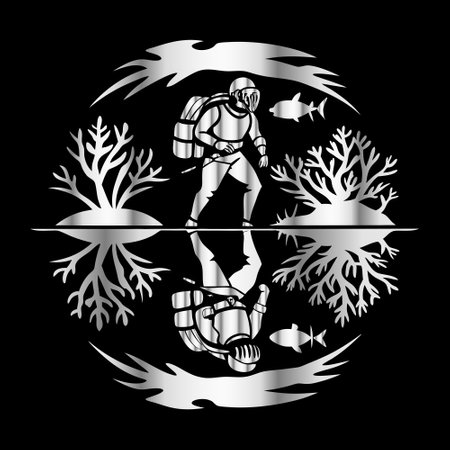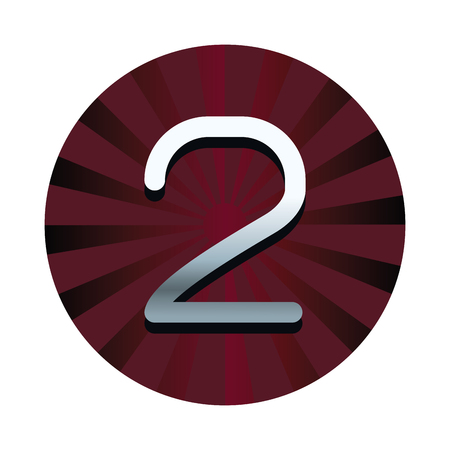Framing Nightmares: More Than Bad Dreams
Nightmares are often brushed off as nothing more than bad dreams, but in American culture, their significance runs much deeper. Far from being just random flickers of the sleeping mind, nightmares serve as windows into our subconscious, reflecting both personal anxieties and collective cultural fears. Throughout history, Americans have looked to nightmares not only with unease but with curiosity—wondering what these nocturnal visions might reveal about the state of the soul or the world at large. From Puritan times through modern psychology, nightmares have been interpreted as spiritual warnings, supernatural visitations, or even messages from beyond. The pervasive fascination with nightmares in America points to a broader belief that dreams—especially the disturbing ones—are never just meaningless; instead, they act as portals to hidden knowledge, folklore traditions, and deep-seated superstitions. This unique framing positions nightmares at the crossroads of science, spirituality, and storytelling, inviting us to explore how they shape and are shaped by our beliefs.
2. Nightmares in American Folklore
Throughout the United States, nightmares have long been more than just personal sleep disturbances—theyve served as powerful motifs in folklore and local legend. These stories, passed down through generations, often blend superstition with spiritual belief, creating a rich tapestry that reflects the diverse cultural landscape of America. From the shadowy figure of the Boogeyman lurking beneath childrens beds to tales of ghostly visitations in isolated towns, nightmares in American folklore function as both cautionary tales and communal identity markers.
Iconic Stories and Local Legends
Nightmare-related legends vary widely across regions. In New England, “The Night Hag” is said to sit on sleepers’ chests, causing terrifying dreams and a sense of paralysis—a phenomenon mirroring modern descriptions of sleep paralysis. In the South, stories like “The Bell Witch” recount supernatural hauntings where nightmares serve as warnings or omens. Urban environments contribute their own chilling narratives: New York’s “Shadow People” are whispered about in subway stations, while California’s “La Llorona” weaves together Hispanic folklore with American settings, her cries haunting children’s dreams.
Table: Nightmare Figures Across U.S. Regions
| Region | Folkloric Figure | Symbolism |
|---|---|---|
| New England | The Night Hag | Anxiety, oppression, moral warning |
| Southeast | Boo Hag / Bell Witch | Supernatural punishment, familial secrets |
| Midwest | The Boogeyman | Childhood fears, social conformity |
| Southwest/West Coast | La Llorona / Shadow People | Cultural displacement, grief, justice |
The Symbolic Meaning of Nightmares in Tradition
These nightmare figures often symbolize deeper anxieties within communities—fear of outsiders, guilt over past actions, or unease about social change. For example, the Boogeyman is used by parents to enforce rules and boundaries, while tales of the Night Hag reflect anxieties about vulnerability during sleep. The way these stories are told—and retold—helps reinforce shared values and warn against breaking communal norms.
The Role of Oral Tradition in Shaping Identity
The act of storytelling itself is integral to how nightmares influence local identity. Through oral tradition, families and communities pass on not just spooky tales but also cultural values and coping mechanisms for fear. This transmission turns nightmares from private terrors into collective experiences that foster belonging and resilience. Ultimately, American nightmare folklore reveals how spiritual beliefs are woven into daily life—transforming what scares us at night into lessons that guide us by day.

3. Superstitions and Sleep: Protective Rituals and Taboos
Nightmares have always held a mysterious place in the American imagination, with communities across the country developing unique superstitions and protective rituals to ward off bad dreams. One of the most iconic symbols is the dreamcatcher, rooted in Ojibwe Indigenous tradition and now widely recognized throughout North America. Traditionally, these woven hoops were hung above beds to filter out nightmares, allowing only positive dreams to pass through their intricate webs. This ritual, though deeply spiritual for many Native Americans, has also been embraced in popular culture as a universal talisman for peaceful sleep.
Beyond dreamcatchers, placing specific objects under one’s pillow is another common practice found in diverse American households. Some people tuck a sprig of lavender or a special stone beneath their pillow, believing these items will absorb negative energy or keep bad dreams at bay. This habit can be traced back to a blend of European immigrant customs—such as using protective herbs—and African American folk beliefs, highlighting how America’s patchwork heritage shapes even our bedtime routines.
Bedtime prayers are another widespread protective ritual, especially among families with Christian backgrounds. The familiar phrase “Now I lay me down to sleep” echoes in countless homes, reflecting both a plea for safety during sleep and a way to invoke spiritual guardianship against nighttime terrors. For many, this nightly prayer becomes not just a comfort but a shield against the unknown lurking in the dark corners of the subconscious.
These rituals are not merely quaint traditions; they offer insight into how Americans have historically coped with the anxiety surrounding nightmares. Whether through Indigenous wisdom, immigrant superstitions, or mainstream religious practices, each ritual connects individuals to a broader sense of community and cultural continuity. In essence, these bedtime habits are less about superstition for its own sake and more about creating a sense of control and reassurance in an unpredictable world.
4. Nightmares as Spiritual Encounters
Nightmares have long been interpreted as more than just psychological phenomena; across cultures, they are often seen as spiritual encounters with ghosts, demons, or other supernatural entities. In the American context, beliefs about the causes and meanings of nightmares reflect a rich tapestry woven from Christian, Native American, and New Age spiritual frameworks.
Ghosts, Demons, and Other Spiritual Agents
Many Americans—regardless of religious background—sometimes attribute nightmares to the influence of spiritual agents. Ghost stories are deeply embedded in American folklore, with haunted houses and restless spirits frequently blamed for nighttime terrors. Demonic presences are also invoked, especially in Christian traditions where the devil or evil spirits are seen as tormentors during sleep. New Age perspectives expand this view further to include astral entities or negative energies that might invade our dreams.
| Spiritual Framework | Agents Blamed for Nightmares | Common Interpretations |
|---|---|---|
| Christianity | Demons, the Devil | Temptation, spiritual attack, need for prayer |
| Native American Traditions | Evil spirits, lost souls | Ancestral warnings, imbalance with nature |
| New Age/Esoteric Beliefs | Astral entities, negative energies | Psycho-spiritual cleansing needed, energy blockages |
| American Folklore (General) | Ghosts, witches, “Old Hag” | Cultural cautionary tales, unresolved trauma |
The Influence of Christian Interpretations
Within many Christian communities in the U.S., nightmares may be framed as evidence of spiritual warfare. Believers might turn to prayer, scripture reading, or even exorcism rituals to ward off evil influences believed to manifest through disturbing dreams. Stories abound of individuals who overcame recurring nightmares by strengthening their faith or seeking help from church leaders.
Native American Perspectives on Nightmares
Native American traditions present a different lens: nightmares are often viewed as messages from ancestors or nature spirits. Tools like dreamcatchers were developed to filter out harmful dreams and protect sleepers from negative spiritual forces. Nightmares can signal that an individual is out of harmony with their community or environment—a call to restore balance rather than simply banish evil.
The Rise of New Age and Hybrid Beliefs
The 20th and 21st centuries have witnessed a surge in New Age spirituality and hybrid belief systems across America. These frameworks frequently interpret nightmares as results of energetic imbalances or psychic attacks from non-physical entities. Practices such as crystal healing, smudging with sage, and lucid dreaming techniques are used to reclaim control over the dream world and cleanse one’s spiritual environment.
5. The Meaning Makers: From Trauma to Transformation
Throughout American history, nightmares have been more than just unsettling nocturnal experiences—they’ve often served as catalysts for healing, self-reflection, and even profound transformation. Rooted in a culture that values both practical resilience and spiritual exploration, Americans have long sought ways to interpret and utilize the messages hidden within their darkest dreams.
The Evolution of Nightmare Interpretation
In early colonial America, nightmares were frequently seen as supernatural warnings or omens. Puritan communities, for example, might interpret a recurring nightmare as a sign of spiritual unrest or impending danger. Over time, with the influence of diverse immigrant cultures and indigenous beliefs, the interpretation of nightmares broadened—merging folk wisdom with religious teachings and emerging psychological theories.
Nightmares as Warnings and Guides
Even today, many Americans turn to dreams—and especially nightmares—for insight during periods of crisis or change. Some view them as subconscious alarms: signals from deep within alerting us to unresolved trauma, suppressed fears, or risky behaviors. In therapy rooms and support groups across the country, sharing nightmare experiences can spark healing conversations about past wounds, mental health struggles, or family dynamics.
From Fear to Empowerment
Modern American approaches increasingly blend scientific and spiritual perspectives. Psychologists may guide patients through dream analysis to uncover hidden meanings or triggers, while spiritual advisors—ranging from pastors to New Age practitioners—encourage individuals to pray over or “reframe” nightmares as opportunities for personal growth. This synthesis allows people to move from victimhood toward agency, transforming night terrors into narratives of survival or redemption.
Cultural Rituals and Personal Resilience
Whether through Native American dreamcatcher traditions or African American church rituals invoking protection during sleep, Americans continue to weave communal and individual practices around nightmares. By naming fears and seeking guidance from ancestors or higher powers, they create frameworks for resilience that stretch beyond the bedroom—turning private suffering into sources of wisdom and collective strength.
This ongoing dance between psychology and spirituality helps Americans harness the power of nightmares—not merely as threats but as meaningful passages on the journey from trauma to transformation.
6. Contemporary Perspectives: Science Meets Spirit
Today’s Americans navigate nightmares at the crossroads of scientific insight and spiritual legacy. Modern psychology primarily understands nightmares as a product of REM sleep disturbances, emotional processing, or mental health issues such as anxiety, trauma, or stress. Cognitive-behavioral therapy, dream journaling, and medications are common clinical responses to frequent night terrors. Yet, even as neuroscience offers rational explanations and evidence-based treatments, spiritual interpretations persist—often seamlessly woven into the fabric of personal belief systems.
Bridging Two Worlds
Many Americans find themselves blending clinical knowledge with the enduring power of folklore and superstition. For some, nightmares are not just misfiring neurons but also messages from the subconscious or even spiritual realms. It’s not uncommon to see individuals consult both a therapist and a spiritual advisor, seeking clarity in both science and faith. Practices like smudging bedrooms with sage or keeping protective crystals by the bedside coexist alongside cognitive behavioral techniques and mindfulness exercises.
Why Both Matter
This hybrid approach reflects America’s pluralistic society—a nation shaped by waves of immigrants carrying diverse traditions and beliefs. For example, descendants of Appalachian settlers might still recount tales of the “Old Hag” sitting on one’s chest, while also acknowledging sleep paralysis as a diagnosable phenomenon. Urban millennials may track their sleep cycles with apps but still light candles to ward off negative energies after a disturbing dream.
Finding Personal Meaning
The process is deeply individual: for some, integrating spiritual practices into nightmare management brings comfort and agency; for others, the scientific route alone suffices. Importantly, this blend allows people to honor their cultural heritage while embracing modern understandings—a dynamic negotiation between ancestral wisdom and contemporary research.
The Ongoing Conversation
Ultimately, America’s approach to nightmares mirrors its broader attitude toward mystery: an openness to multiple truths coexisting in tension and harmony. Whether one sees nightmares as echoes of unresolved trauma or warnings from another realm, both perspectives provide tools for making sense of what unfolds in the dark—a testament to the enduring interplay between science and spirit in American life.


